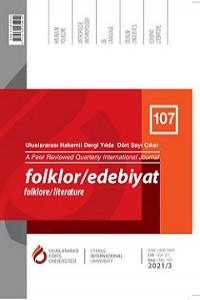İlk Türk Popüler Edebiyat Eserlerinde Çeviri Yoluyla Milli Kimlik İnşası
Constructing a National Identity through Translation in the First Turkish Popular Novels
Author(s): Özge AltıntaşSubject(s): Fiction, Turkish Literature, Sociology of Culture, Translation Studies, Identity of Collectives
Published by: Uluslararası Kıbrıs Üniversitesi
Keywords: popular literature; national identity; creative writing; translation; ideology;
Summary/Abstract: This study aimed to investigate the writing technique applied to produce the first local popular novels in the Turkish literary system, and the roles of these novels in the specific time period. The research materials of this study were Türklerin Sherlock Holmes’ü Amanvermez Avni (1913-1914), Kazıklı Voyvoda (1928), and Baytekin (1935-1936), respectively the first examples of the crime fiction, horror fiction and graphic novels in the Turkish literary system. These first local examples of popular literature are also labelled adaptation or imitation because of their resemblance to popular Western fiction. Since the contemporary translation theories are based on the idea that every translation is a rewriting and represents a particular ideology, I analysed the aforementioned works as “translated texts” in relation to the social conditions of the period of publication. The study showed that popular literature is a functional tool to construct national identity, aiming to spread the tenets of the adopted ideology to every segment of society, and that the first examples of Turkish popular literature were produced through translation for this particular purpose. In this study, I used the Turkish term “telif” not as the synonym of original, but to describe a writing technique which means “creative mediation”. Therefore, I discussed the findings of the analysis within the framework of “telif” (“creative mediation”), which in this case means writing/creating through translation in the Ottoman period and early years of the Turkish Republic. As a result, this study uncovered that the aforementioned works as the first examples of Turkish popular literature genres were produced through translation technique called “telif” (“creative mediation”).
Journal: Folklor/Edebiyat
- Issue Year: 27/2021
- Issue No: 107
- Page Range: 839-855
- Page Count: 17
- Language: Turkish

